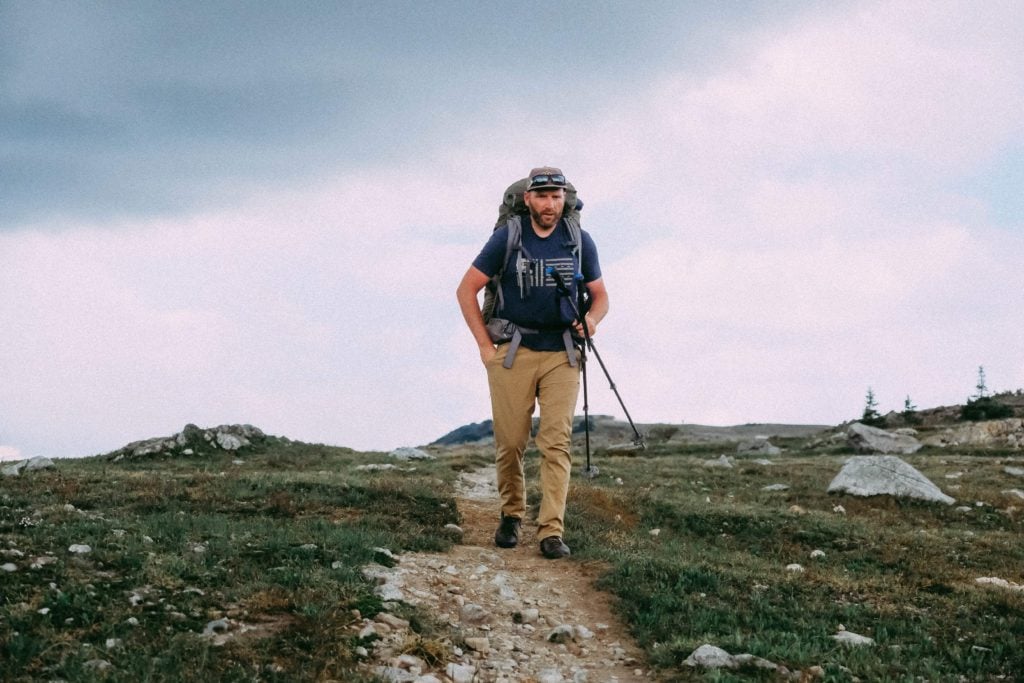Hiking is a real blessing to the body and soul. It is known for many health physical benefits and mental assistant. Hiking is also great to get to know the outdoors and getting closer to nature. Still, it is not uncommon that hiking will cause you knee pains, usually called “hiker’s knee pain”. Actually, it is a known factor for why people avoid hiking, although there are preventing steps and hiking guidelines to overcome this obstacle. So, let’s see what we can do about it.

Suffering from hiking knee pain can be a result of several factors. A
During the hike itself, we need also to keep in mind the terrain and type of hike. If going downhill, the pressure on the knees is much higher! Add a heavy backpack and your knees should handle forces that are way more than your bodyweight. Hard terrain also will cause impact to bounce back to the knees, unlike hiking over sands, for example.


Before discussing how we should handle the hike itself, there are several action items we should consider to be ready for hiking
Long Hikes require us to have stronger legs than what usually assumed. There is a very high load on the legs and pressure and friction in the area of the knees. Not only knees should carry the load of body weight, but there’s also a need to consider backpack load or other items you carry, on top of body weight. These loads may result in pressure which is even x4 times the body weight in downhill steps, and in extreme conditions, it can be more than that.
In order to support this load and pressure, we should have stronger legs, specifically the quadriceps, hamstrings and calves and, stronger glutes and hip flexors. The muscles will help to have stable steps, accurate movement of the knee and will reduce friction of bones and cartilage. Weak glutes and tight hip flexors can also contribute to the IT band syndrome.
Training for hiking should include
This will give the additional support during the hike, keeping a proper movement of the knee in-place. You might skip using them in short hikes or on easy terrains but it is safer to catty knee braces with you.
This is a very important topic and part of the essential gear for any hike or trek.
Quality shoes, that fit properly your feet, can do good shock absorbing. hiking boots with high ankle grip can keep you steps much safer, with proper movements. Shoes should be comfortable and suitable for long hikes. It is not only comfort, but it is also a health aspect and reducing the risk of injury.
Based on the route, you should consider using hiking boots or trail shoes. Sometimes, trail shoes will prevent better knee pains, as they tend to be softer and the movement of the ankle is different and your steps might be more appropriate. So in such case, if the terrain supposes to be hard, rocky, water, etc. you might want to keep using hiking boots.
Adding supportive insoles can be a good add-on to your shoes. There are cheaper types which you can instantly buy, or to have a unique product based on your own feet structure and required support.
Adding to your diet food that fight inflammatory can give you the additional health boost you are missing to handle your knee pain.
Olive oil, green leafy vegetables, such as spinach, kale, and collards. Eating fatty fish like salmon, mackerel, tuna,
All these foods include the right ingredients to lower inflammation.
Hiking with trekking poles is much safer and healthier. this can be a game changer to your hike. You can read about the
Don’t hold yourself back too much as it may increase the pressure on your knees. Instead try to hike or decent smoothly, like a gentle spring, avoiding hard stops.
In addition, choose the right way to hike down. Sometimes it is easier, safer and healthier to rotate body and steps to the side, allowing other muscles to support the hiking downhill.
Don’t leap, as leaping increases the load and shock to the knees.
If you still feel the hiking knee pain consider these actions:
Ibuprofen, which can be found inside several ache-reducing pills has anti-inflammation properties as well. Have it with you to reduce the pain as first aid if needed.
When possible, perform RICE, so you can reduce swelling and pain as first aid. Applying ice for 10 minutes likely to reduce pain and swelling. Repeat applying ice as often as possible in the first day or two after the pain starts and having the rest. Apply compression on the knee, not too tight to avoid interruption to blood flow. Elevating the legs above the body can also help to reduce pain.
Foam rolling compression and exercising showed a contribution to faster recovery and prevention. Consult with a physician for the proper exercises based on your injury and pain type.
Stretching will increase muscles strength and mobility. Hip-flexor stretching will strengthen the support on the knee and body’s movements.
If the pain is strong, continuous and not reduced although applying all the above you should consult with your doc and physician.
Physiotherapy might be considered to get the right guidance for treatment and knee area strength and protection.
There are on the market many medical/nutrition supplements you can consider as treatment and prevention.
Nowadays you can find many supplements that include any combination from the following ingredients: Glucosamine, Chondrotin, MSM ( Methylsulfonylmethane), Collagen-type-2, and Aflapin. Those can be also boosted with known spices that have anti-inflammatory properties. All these and additional researched formulas claimed to reduce pain, fighting Arthritis, and to support joints and cartilage.
It is strongly advised to get the right consultation before using such supplements. It is strongly advised to verify that indeed you are about to treat the right symptoms with the right supplements. Please have adequate examination and consultation before approaching medications.
Leave a comment